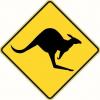I am taking my fist crack at panel raising by near-neander methods, and have a couple of questions.
First of all, the doors I am making will be painted, so learning from my mistakes will not be unduly painful! Working in poplar. And by "near-neander", I am referring to defining the field--I used the table saw to cut a 3/32" deep kerf at the edge of the field.
In planing the ends of the panel, I found that my best results came from a plane with a very wide mouth, set to take fairly heavy shavings (.009"). Switching to a smoother with fine mouth and set for thin shaving just roughened the surface. Is that to be expected, or am I doing something wrong?
How do you get a good surface on the end bevels? For the painted piece, I could always pull out the ROS, but I want to learn how to get a good finish so on a future piece I can do it right with confidence. A card scraper is all I can think to do, but I'm having a hard time getting good results. Suggestions?
One thing I definitely have taught myself in this exercise--I do NOT want a knot in the area I will be planing away to make the bevel!




 Reply With Quote
Reply With Quote






